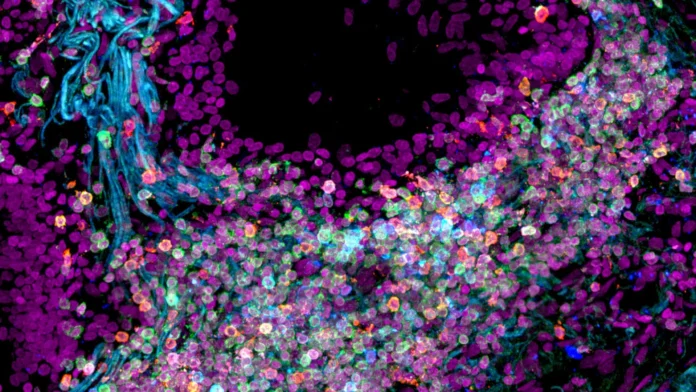
Researchers have created a publicly available lung cell atlas that promises to accelerate studies into pulmonary health and disease.
The Human Lung Cell Atlas (HLCA), outlined in the journal Nature Medicine, is the largest and most comprehensive map of human lungs.
It combines 49 datasets of the human respiratory system into a single atlas, spanning over 2.4 million cells from 486 individuals.
The resource provides an overview of the cells in healthy human lungs, the variations between individuals and the changes that happen with disease.
“This is the first effort to compare healthy and diseased lungs in one study in an integrated way,” said senior author Martijn Nawijn, PhD, from the University Medical Center Groningen, The Netherlands.
He pointed out that the study supported the presence of lung fibrosis in COVID-19 and identified a common cell state between lung fibrosis, COVID-19, and lung cancer.
“Finding these shared disease-associated cells is really exciting, and reveals a totally different way of looking at lung diseases, opening possibilities for novel treatment targets and developing treatment response biomarkers,” he commented.
“Our findings also suggest that therapies working for one disease may help alleviate others.”
The resource covers all major lung single-cell RNA sequencing studies published to date and offers an open-access platform through which new datasets can be mapped onto this.
It forms part of the Human Cell Atlas, an international collaborative consortium that aims to map every cell type in the human body and in so doing transform understanding of biology and disease.
To build the lung cell atlas, the researchers collected single-cell RNA sequencing data and detailed, harmonized technical, biological and demographic metadata from 14 datasets that included samples from 107 healthy people diverse in age, sex, ethnicity, body mass index and smoking status.
To extend the atlas and include samples from lung disease, they mapped 1,797,714 cells from 380 healthy and diseased individuals from 37 datasets to the atlas core, bringing the total to 2.4 million cells from 486 individuals.
The numbers of cells and individuals involved gave it the power to see rare cell types in datasets such as ionocytes, tuft cells, neuroendocrine cells and also detected six cell entities not previously found in human lungs.
It also recovered cell type-specific gene modules associated with covariates such as lung anatomical location, age, sex, BMI and smoking status.
The lung cell atlas also provides a roadmap for building and using comprehensive, interpretable and up-to-date organ- and population-scale cell atlases.
Co-author Alexander Misharin, PhD, an associate professor at Northwestern University Feinberg School of Medicine, said: “As the first whole reference atlas of a major organ, the HLCA also represents a milestone towards achieving a full Human Cell Atlas which will transform our understanding of biology and disease and lay the foundation for a new era of healthcare.”
